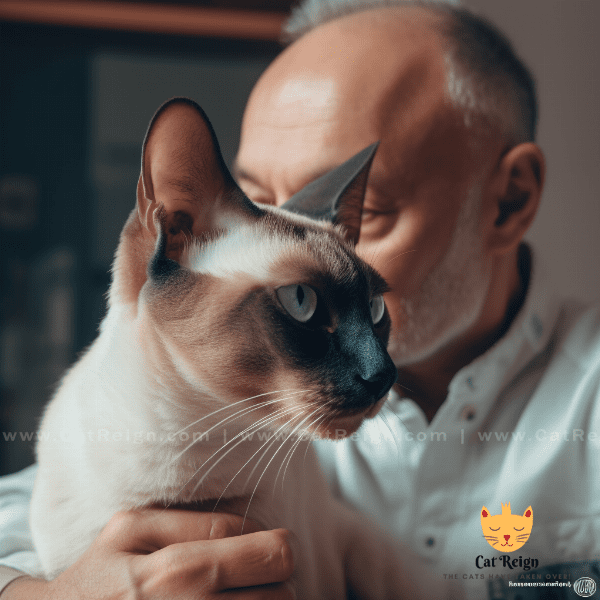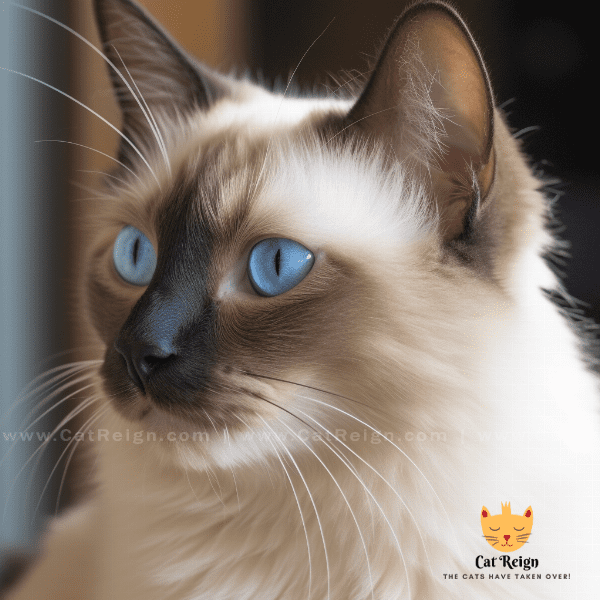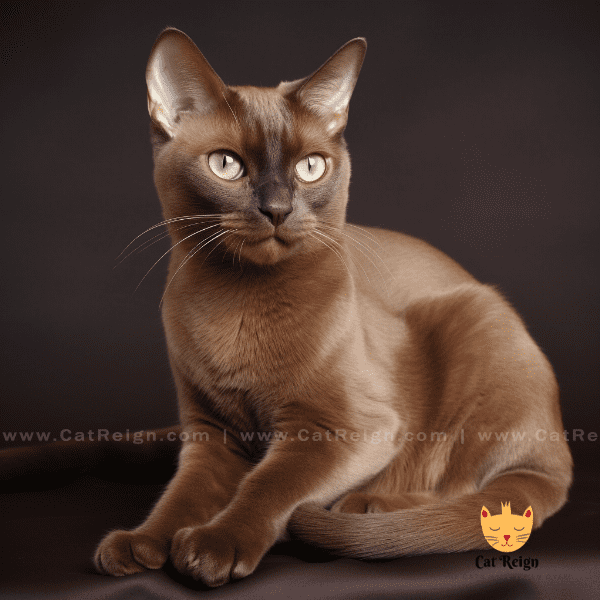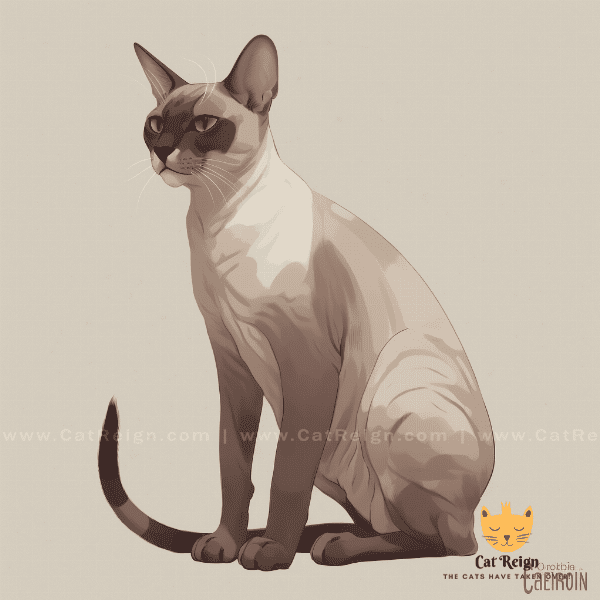Table of Contents
- History of the Tonkinese Cat Breed
- Physical Characteristics of Tonkinese Cats
- Personality Traits of Tonkinese Cats
- Coat Colors and Patterns of Tonkinese Cats
- Diet and Nutrition for Tonkinese Cats
- Grooming and Care for Tonkinese Cats
- Health Concerns for Tonkinese Cats
- Training and Exercise for Tonkinese Cats
- Living with Tonkinese Cats: Tips and Advice
- Finding the Perfect Tonkinese Cat for You
History of the Tonkinese Cat Breed
Tonkinese cats are a popular breed of domestic cats known for their distinctive looks and friendly personality. The breed is a cross between the Siamese and Burmese cats and was first developed in North America in the 1960s.
Origins of the Tonkinese Cat Breed
The Tonkinese cat breed originated from the desire to create a cat that combined the best traits of the Siamese and Burmese cats. Both breeds were popular at the time, and breeders wanted to create a cat with the Siamese’s intelligence and vocal nature and the Burmese’s affectionate and social temperament.
Early Development of the Breed
The first Tonkinese cats were bred in Canada in the 1960s by crossing Siamese and Burmese cats. The initial breeding was done by a Canadian breeder named Margaret Conroy, who named the breed the “Golden Siamese.” In the United States, a breeder named Jane Barletta continued the work of developing the breed and eventually renamed them Tonkinese cats after the Tonkin region of Vietnam.
Recognition of the Breed
The Tonkinese cat breed was recognized by the Canadian Cat Association (CCA) in 1971 and the Cat Fanciers’ Association (CFA) in 1984. The breed has gained popularity over the years and is now recognized by many other cat associations around the world.
About Tonkinese Cat in Modern Times
Today, the Tonkinese cat breed is known for its playful, affectionate, and social personality. They make great pets for families with children or other pets and are known for being loyal and devoted to their owners. Tonkinese cats come in a variety of coat colors and patterns, but all share the same striking appearance of bright, expressive eyes and a sleek, muscular body.
In conclusion, the Tonkinese cat breed is a relatively new breed of domestic cat that was developed in North America in the 1960s. Their unique mix of traits from the Siamese and Burmese breeds has made them popular with cat lovers around the world. Today, the breed is recognized by many cat associations and is known for its friendly and outgoing personality, making them great pets for families and individuals alike.

Physical Characteristics of Tonkinese Cats
The Tonkinese cat breed is known for its distinctive appearance, which is a result of the crossbreeding of the Siamese and Burmese breeds. Tonkinese cats are medium-sized cats with a muscular build and a sleek, elegant appearance.
Body Structure
The body of a Tonkinese cat is muscular and athletic, with a medium-sized frame that is longer than it is tall. Their legs are sturdy and well-proportioned to their body size, with round paws and a strong, muscular neck that supports their wedge-shaped head.
Coat Colors and Patterns
Tonkinese cats come in a variety of coat colors and patterns, including solid colors, pointed, mink, and solid with white. The most common coat colors are brown, blue, chocolate, and lilac, while the most common coat patterns are pointed, which is similar to the Siamese, and mink, which is a mix of the Burmese and Siamese coat patterns.
Facial Features
The face of a Tonkinese cat is characterized by its wedge-shaped head, which is slightly rounded with a strong jawline. Their ears are medium-sized and set slightly apart, with rounded tips that tilt forward. Tonkinese cats are known for their bright, expressive eyes, which are almond-shaped and set at a slight angle, with colors ranging from blue to green to gold.
Size and Weight
Tonkinese cats are medium-sized cats, with males typically weighing between 8 to 12 pounds and females weighing between 6 to 8 pounds. They have a muscular build and a sleek, athletic appearance, with a long, tapering tail that is in proportion to their body size.
In conclusion, the Tonkinese cat breed has a unique and distinctive appearance, characterized by its muscular build, sleek appearance, and wedge-shaped head. They come in a variety of coat colors and patterns, with bright, expressive eyes that add to their striking appearance. Tonkinese cats are medium-sized cats with a muscular build, and they typically weigh between 6 to 12 pounds, depending on their sex.
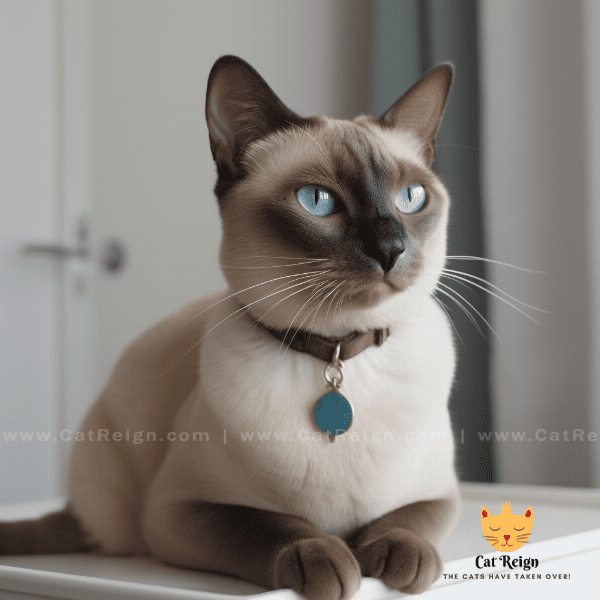
Personality Traits of Tonkinese Cats
Tonkinese cats are known for their friendly, outgoing, and social personality. They are intelligent cats that love to interact with their owners and are known for their affectionate and loyal nature.
Affectionate and Social
Tonkinese cats are very affectionate and love to be around their owners. They are known for their love of cuddling and will often seek out their owner’s lap for attention. They are also very social cats and enjoy the company of other cats, dogs, and even humans.
Intelligent and Playful
Tonkinese cats are intelligent and curious cats that love to explore their surroundings. They are known for their playful nature and love to play games with their owners, such as fetch or hide-and-seek. They are also very agile cats and love to climb and jump, making them great pets for those who want an active and playful companion.
Vocal and Communicative
Tonkinese cats are vocal cats that love to communicate with their owners. They have a wide range of vocalizations, from soft purring to loud meowing, and will often “talk” to their owners to get attention or express their needs. They are also very expressive cats and will often use body language to communicate, such as rubbing against their owner’s legs or flicking their tail.
Loyal and Devoted
Tonkinese cats are known for their loyalty and devotion to their owners. They form strong bonds with their owners and will often follow them around the house or sit on their lap for extended periods. They are also very protective of their owners and will defend them if they sense danger.
In conclusion, Tonkinese cats are known for their friendly, outgoing, and social personality. They are intelligent, playful, and love to interact with their owners. They are also very vocal and communicative, using a variety of vocalizations and body language to express themselves. Tonkinese cats are loyal and devoted to their owners, making them great pets for families and individuals looking for a loving and affectionate companion.

Coat Colors and Patterns of Tonkinese Cats
Tonkinese cats are known for their unique and striking coat colors and patterns, which are a result of the crossbreeding of the Siamese and Burmese Cat breeds. They come in a variety of colors and patterns, including pointed, mink, and solid colors with or without white.
Pointed Coats
The pointed coat pattern is the most common coat pattern for Tonkinese cats and is similar to that of the Siamese cat breed. The points of the cat, such as the ears, tail, and face, are a darker color than the rest of the coat, which is usually a lighter color.
Mink Coats
The mink coat pattern is a mix of the Siamese and Burmese coat patterns and is unique to the Tonkinese cat breed. The points of the cat are a darker color than the rest of the coat, but the contrast is less pronounced than in the pointed coat pattern.
Solid Colors with or without White
Tonkinese cats also come in a variety of solid colors, including brown, blue, chocolate, and lilac. These colors can also be combined with white, creating a bi-color or tri-color coat pattern.
Coat Texture
The coat of a Tonkinese cat is short, fine, and soft to the touch. It is easy to groom and does not require a lot of maintenance. They are known for shedding very little and are a good choice for people with allergies.
In conclusion, Tonkinese cats come in a variety of coat colors and patterns, including pointed, mink, and solid colors with or without white. The pointed coat pattern is the most common and is similar to that of the Siamese breed, while the mink coat pattern is unique to the Tonkinese breed. Tonkinese cats have a short, fine, and soft coat that is easy to groom and does not shed much. They are a great choice for people with allergies and those looking for a low-maintenance cat with a striking appearance.
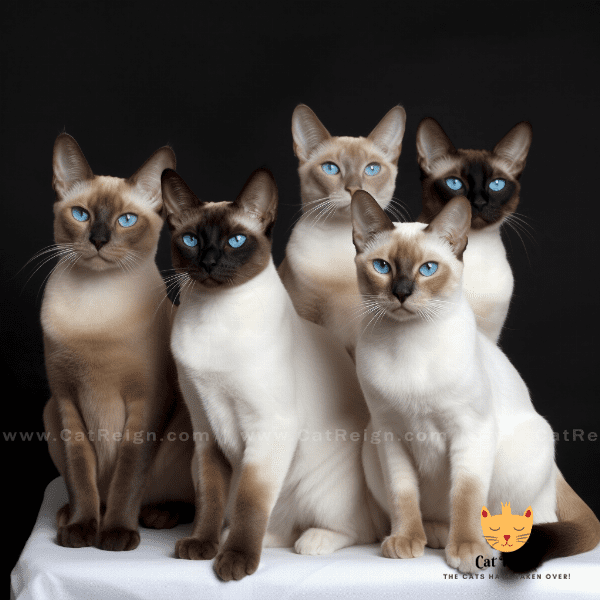
Diet and Nutrition for Tonkinese Cats
Feeding your Tonkinese cat a balanced and nutritious diet is essential for their health and well-being. It’s important to choose a high-quality cat food that meets their nutritional needs and to feed them the appropriate amount based on their age, weight, and activity level.
Nutritional Needs
Tonkinese cats have the same nutritional needs as other cats and require a diet that is high in protein, moderate in fat, and low in carbohydrates. They also require certain vitamins and minerals, such as taurine, which is essential for maintaining their heart health and vision.
Choosing a Cat Food
When choosing a cat food for your Tonkinese cat, it’s important to look for a high-quality food that is made from real meat and does not contain fillers, by-products, or artificial preservatives. Wet or dry food can be appropriate for Tonkinese cats, but wet food can help to ensure they are getting enough moisture in their diet.
Feeding Guidelines
The amount of food you should feed your Tonkinese cat will depend on their age, weight, and activity level. It’s important to follow the feeding guidelines on the cat food packaging and to monitor their weight to ensure they are not over or underweight.
Treats
Treats can be a great way to reward your Tonkinese cat and provide them with extra nutrients, but they should be given in moderation. Look for treats that are made from real meat or fish and avoid treats that contain fillers or artificial preservatives.
Water
Water is essential for your Tonkinese cat’s health and well-being. It’s important to provide your cat with fresh, clean water at all times and to encourage them to drink regularly.
In conclusion, feeding your Tonkinese cat a balanced and nutritious diet is essential for their health and well-being. Choose a high-quality cat food that meets their nutritional needs and feed them the appropriate amount based on their age, weight, and activity level. Treats can be given in moderation, and fresh, clean water should be provided at all times. By providing your Tonkinese cat with a healthy diet and proper nutrition, you can help ensure they live a long and healthy life.
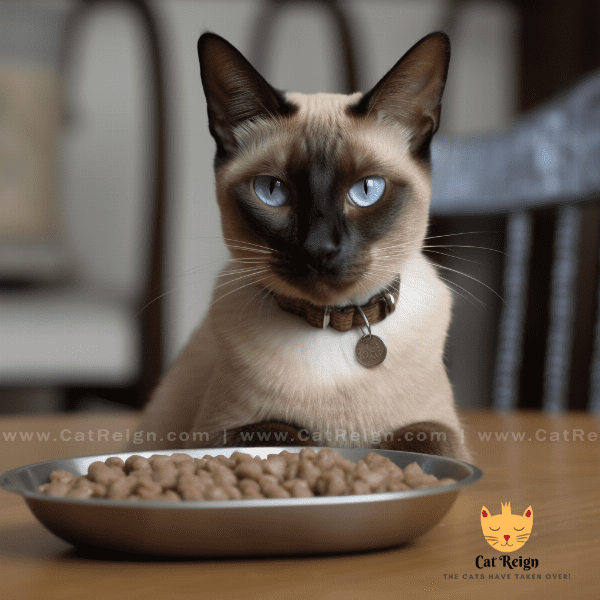
Grooming and Care for Tonkinese Cats
Tonkinese cats have a short, fine, and soft coat that is easy to groom and does not require a lot of maintenance. However, there are still a few things you should do to keep your Tonkinese cat healthy and looking their best.
Brushing
Tonkinese cats have a short coat that does not mat or tangle easily, but regular brushing can help to remove loose hair and distribute natural oils throughout their coat. Brushing can also help to reduce shedding and prevent hairballs.
Bathing
Tonkinese cats do not require frequent baths, as they are naturally clean cats that groom themselves regularly. However, if your cat gets into something dirty or develops a skin condition, you may need to give them a bath. Use a mild cat shampoo and rinse thoroughly to avoid leaving any soap residue.
Nail Care
Trimming your Tonkinese cat’s nails regularly can help to prevent them from scratching furniture or people. Use a pair of cat nail clippers and trim just the tip of each nail, being careful not to cut the quick.
Dental Care
Dental care is important for your Tonkinese cat’s overall health. Brush their teeth regularly with a soft-bristled toothbrush and cat-friendly toothpaste to prevent dental problems and bad breath.
Veterinary Care
Regular veterinary check-ups are essential for your Tonkinese cat’s health and well-being. Take them to the vet at least once a year for a wellness exam and vaccinations. Be sure to also follow your vet’s recommendations for flea and tick prevention, deworming, and other preventive care measures.
In conclusion, Tonkinese cats have a short, low-maintenance coat, but they still require regular grooming and care to stay healthy and happy. Brushing, bathing, nail care, and dental care are all important aspects of their grooming routine. Regular veterinary check-ups are also essential for their health and well-being. By providing your Tonkinese cat with the proper grooming and care, you can help ensure they live a long and healthy life.

Health Concerns for Tonkinese Cats
Tonkinese cats are generally healthy cats, but like all cat breeds, they are prone to certain health issues. By being aware of these health concerns and taking proactive steps to prevent them, you can help ensure your Tonkinese cat lives a long and healthy life.
Dental Issues
Dental issues, such as periodontal disease, are common in cats, including Tonkinese cats. Regular dental care, such as brushing their teeth and providing them with dental treats and toys, can help prevent dental problems.
Urinary Tract Issues
Urinary tract issues, such as urinary tract infections or blockages, are more common in male cats, but can occur in females as well. Providing your Tonkinese cat with plenty of fresh water and a balanced diet can help prevent urinary tract issues.
Obesity
Tonkinese cats are prone to obesity, especially if they are not getting enough exercise or are overfed. Monitor your cat’s weight and adjust their diet and exercise routine accordingly to prevent obesity and related health issues.
Hypertrophic Cardiomyopathy
Hypertrophic cardiomyopathy is a heart condition that can affect Tonkinese cats, as well as other cat breeds. Regular veterinary check-ups can help catch this condition early, and treatment options are available to manage symptoms.
Amyloidosis
Amyloidosis is a condition where abnormal proteins build up in the body’s tissues and organs, including the liver and kidneys. While rare, Tonkinese cats can be predisposed to this condition. Regular veterinary check-ups can help detect this condition early, and treatment options are available to manage symptoms.
In conclusion, Tonkinese cats are generally healthy cats, but they can be prone to certain health issues. Dental issues, urinary tract issues, obesity, hypertrophic cardiomyopathy, and amyloidosis are all health concerns that can affect Tonkinese cats. Regular veterinary check-ups and proactive preventative care can help ensure your Tonkinese cat lives a long and healthy life.

Training and Exercise for Tonkinese Cats
Tonkinese cats are intelligent and active cats that require regular exercise and mental stimulation. Providing your Tonkinese cat with opportunities for play, exercise, and training can help keep them happy and healthy.
Exercise
Tonkinese cats are active cats that love to play and explore their surroundings. Providing them with toys, such as interactive puzzle toys or feather wands, can help keep them engaged and provide them with exercise. They also enjoy climbing and jumping, so providing them with a cat tree or other climbing structures can help meet their exercise needs.
Training
Tonkinese cats are intelligent cats that can be trained to do tricks or even walk on a leash. Using positive reinforcement techniques, such as clicker training or treat rewards, can help make training a fun and rewarding experience for both you and your cat. Training can also help provide mental stimulation and prevent boredom.
Indoor vs Outdoor
Tonkinese cats can be indoor or outdoor cats, but it’s important to keep them safe if they go outside. Providing them with a secure outdoor enclosure or supervised outdoor playtime can help keep them safe from predators and other dangers. Indoor cats can still get plenty of exercise and mental stimulation through play and training.
Playtime
Playtime is an important aspect of a Tonkinese cat’s life and can help provide them with exercise and mental stimulation. Playing with your cat regularly can also help strengthen the bond between you and your cat. Try incorporating different types of toys and games to keep playtime interesting and engaging for your cat.
In conclusion, Tonkinese cats are intelligent and active cats that require regular exercise and mental stimulation. Providing them with opportunities for play, exercise, and training can help keep them happy and healthy. They enjoy toys and games that allow them to explore and climb, and can be trained using positive reinforcement techniques. Whether indoor or outdoor, providing your Tonkinese cat with a stimulating and safe environment can help ensure they live a long and happy life.
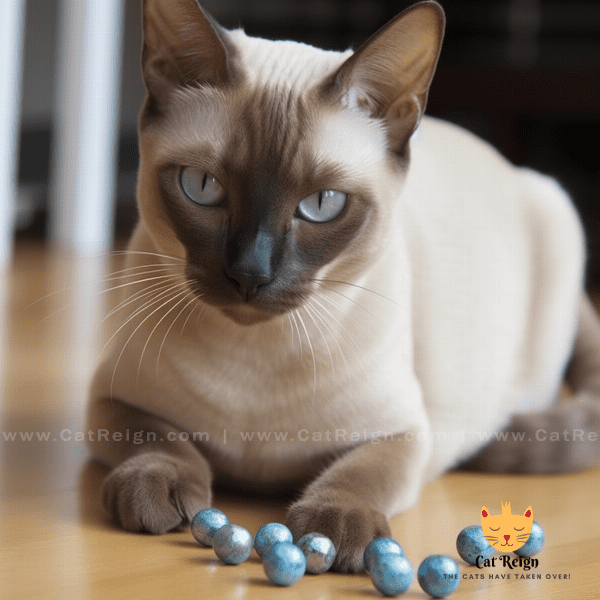
Living with Tonkinese Cats: Tips and Advice
Tonkinese cats are a wonderful breed of cat to live with, but there are a few things to keep in mind to ensure you have a happy and harmonious life with your feline friend.
Socialization
Tonkinese cats are social cats that enjoy being around people and other pets. It’s important to socialize them early on in life to help them develop good social skills and prevent them from becoming shy or fearful. Providing them with plenty of positive experiences with people and other animals can help ensure they are well-adjusted and friendly.
Attention
Tonkinese cats thrive on attention and affection from their owners. They enjoy being part of the family and will often follow their owners around the house. Make sure to provide them with plenty of love and attention to keep them happy and content.
Scratching Posts
Tonkinese cats enjoy scratching and need an appropriate place to do so. Providing them with a scratching post or other scratching surface can help prevent them from scratching furniture or other household items. It’s important to choose a scratching post that is tall enough for them to fully stretch out and sturdy enough to withstand their scratching.
Litter Box
Tonkinese cats are clean cats that prefer a clean litter box. It’s important to provide them with a litter box that is cleaned regularly and in a quiet, private location. Providing them with multiple litter boxes in different locations can also help prevent litter box issues.
Health Care
Regular veterinary check-ups and preventive care are important for your Tonkinese cat’s health and well-being. Make sure to follow your vet’s recommendations for vaccinations, flea and tick prevention, and other preventive care measures. It’s also important to keep up with their dental care and to monitor their weight and overall health.
In conclusion, living with a Tonkinese cat can be a wonderful and rewarding experience. Socializing them early on, providing them with attention and affection, offering appropriate scratching surfaces, maintaining a clean litter box, and ensuring their health care needs are met are all important aspects of living with a Tonkinese cat. By following these tips and advice, you can help ensure a happy and harmonious life with your feline friend.
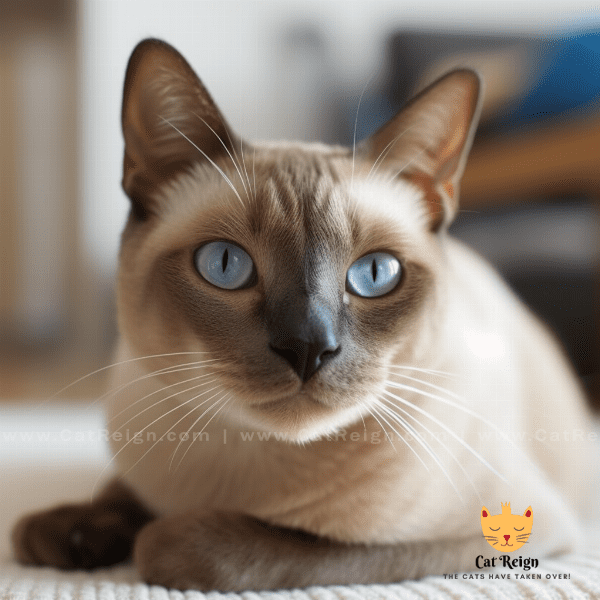
Finding the Perfect Tonkinese Cat for You
If you’re considering adding a Tonkinese cat to your family, there are a few things to consider to ensure you find the perfect cat for you.
Breed Characteristics
Tonkinese cats have unique characteristics that make them stand out from other cat breeds. They are intelligent, playful, and affectionate cats that thrive on attention and love. They are also known for their distinctive coat colors and patterns. Consider if these characteristics fit your lifestyle and personality before adopting a Tonkinese cat.
Adoption vs. Breeder
Adopting a Tonkinese cat from a shelter or rescue organization can be a great way to give a cat a second chance at a loving home. If you’re interested in getting a Tonkinese cat from a breeder, make sure to do your research and choose a reputable breeder who prioritizes the health and well-being of their cats.
Health Screening
Before adopting a Tonkinese cat, make sure to ask about their health history and any screening tests that have been done. Tonkinese cats can be prone to certain health issues, such as hypertrophic cardiomyopathy and amyloidosis, so it’s important to be aware of these risks and take proactive steps to prevent them.
Personality
Tonkinese cats are known for their outgoing and affectionate personalities, but each cat is unique. Spend time with the cat before adopting to make sure their personality and energy level fit with your lifestyle and household.
Lifestyle and Household
Consider your lifestyle and household before adopting a Tonkinese cat. Tonkinese cats thrive on attention and interaction with their humans, so they may not be the best fit for someone who is away from home for long periods of time. They also do well in households with other pets, including dogs and cats, but may need time to adjust to new animals.
In conclusion, finding the perfect Tonkinese cat for you requires consideration of their breed characteristics, adoption vs. breeder, health screening, personality, and your lifestyle and household. By taking the time to find the right cat for you, you can ensure a happy and harmonious life with your feline friend.
